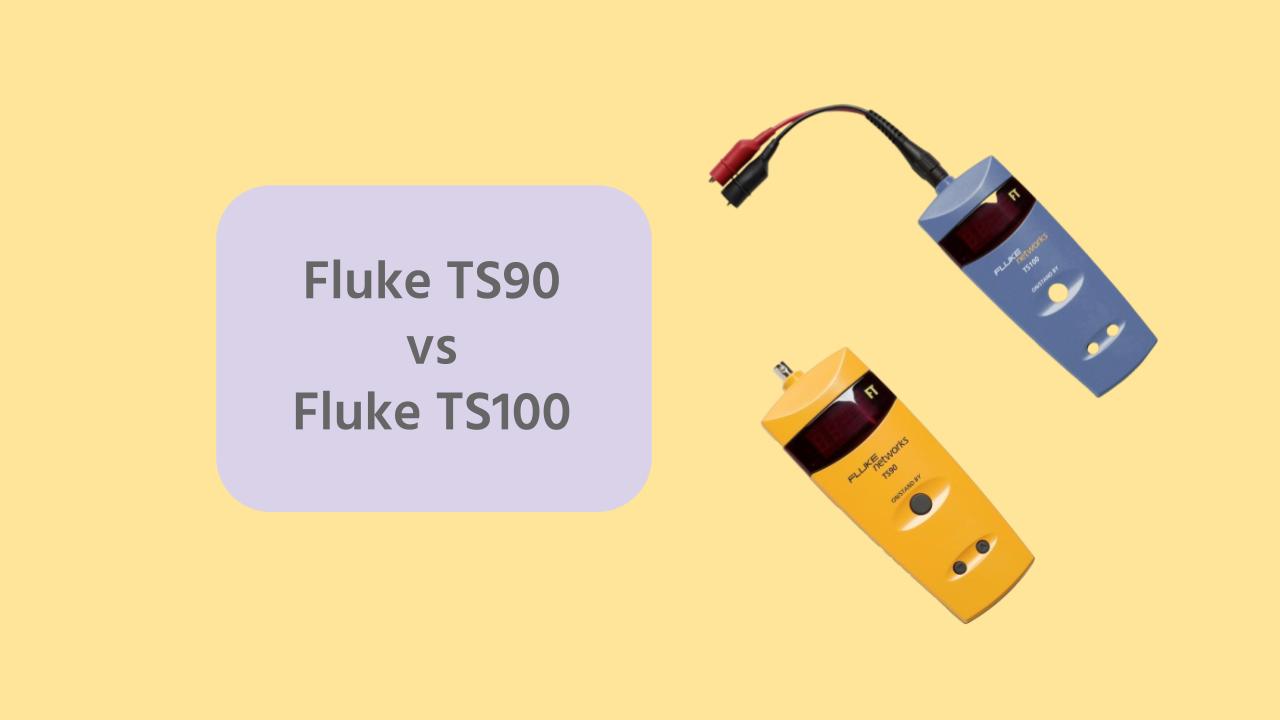This article delves into a detailed comparison of the Fluke TS90 and TS100 Cable testers, examining their specifications, features, and ideal use cases to help you determine which cable fault finder best meets your needs.
The Fluke TS90 is known for its simplicity, ease of use, and affordability, making it a popular choice for basic cable testing and fault finding. It offers essential functions such as distance measurement to faults and voltage detection, packed into a compact and lightweight design suitable for fieldwork.
On the other hand, the Fluke TS100 provides more advanced features, including a longer range, continuous measurement capability, and enhanced fault detection options. This model is geared towards professionals who require more comprehensive diagnostic tools for larger and more complex cabling installations.
🏷️ Fluke Cable Fault Finder Deals ⭐⭐⭐⭐⭐
Table of Contents
Comparison Table: Fluke TS90 vs. Fluke TS100
Both instruments are excellent cable fault finders designed to help technicians locate and diagnose cable faults quickly and accurately. Here’s a detailed comparison of their features and specifications:
| Feature/Specification | Fluke TS90 | Fluke TS100 |
|---|---|---|
| Max Cable Length | 2,500 feet (762 meters) | 3,000 feet (915 meters) |
| Voltage Detection | Up to 250 VAC | Up to 250 VAC |
| Display Type | Distance reading, large LED screen | Distance reading, large LED screen |
| Technology | TDR (Time Domain Reflectometry) | TDR (Time Domain Reflectometry) |
| Tone Generator | Yes, with SmartTone® technology | Yes, with SmartTone® technology |
| Distance to Fault | Instantly measures distance to open or short | Instantly measures distance to open or short |
| Cable Types | Works on any two or more conductor cable | Works on any two or more conductor cable |
| Special Features | Moisture proof, one-button operation | High voltage detection, continuous measurement |
| Additional Capabilities | None | Measures cable distance on spool, more advanced fault location features |
| Weight | Lightweight | Slightly heavier but more feature-rich |
| Battery | 4 AA batteries | 4 AA batteries |
| Price Range | Lower | Higher due to advanced features |
Detailed Comparison
Fluke TS90
Advantages:
- User-Friendly: Simple one-button operation makes it easy to use.
- Cost-Effective: Generally, more affordable, making it suitable for basic cable fault detection tasks.
- Compact Design: Lightweight and portable, ideal for fieldwork.
Disadvantages:
- Limited Range: Maximum cable length of 2,500 feet, which might be insufficient for larger installations.
- Basic Features: Lacks some advanced features found in the TS100.
Fluke TS100
Advantages:
- Extended Range: Can measure up to 3,000 feet, suitable for larger installations.
- Advanced Fault Detection: Includes features for detecting faults on spools and multiple bridge taps.
- Continuous Measurement: Measures continuously while “On,” making it easier to locate intermittent faults.
- SmartTone Technology: Provides five distinct tones for exact pair identification.
Disadvantages:
- Higher Cost: More expensive due to additional features and capabilities.
- Slightly Heavier: While still portable, it is slightly heavier than the TS90.
Summary
Both the Fluke TS90 and TS100 are reliable tools for cable fault detection. The choice between them depends on your specific needs:
- Fluke TS90: Ideal for users who need a basic, cost-effective, and easy-to-use cable fault finder for smaller installations.
- Fluke TS100: Better suited for professionals who require advanced features, extended range, and more precise fault detection capabilities for larger and more complex installations.


